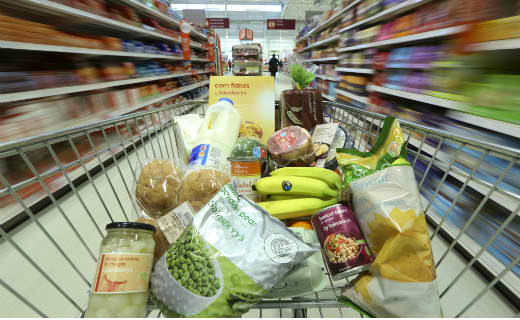LONDON, 2015-6-18 — /EPR Retail News/ — British families are binning more than 4.2million tonnes of food every year – meaning masses of vital nutrients are going to waste rather than helping to improve the health of the nation.
- British family diets could benefit from over 60 tonnes of additional vitamins and minerals annually by reducing food waste1
- Nutrient rich potatoes, bread and milk amongst the biggest binned foods
- Protein, found in milk, eggs and poultry is the most wasted food component
Annual food waste reports regularly reveal the quantity of food that is discarded each year, and the financial impact of this – most recently reported as £700 a year per family.2 However, new research today uncovers a further cost of this food waste – the 60 tonnes of vital vitamins and minerals that are binned annually.
A new study by Sainsbury’s – to launch its waste campaign ‘…to the rescue’ – shows potatoes, bread and milk are among the UK’s most wasted foods with 1.65million tonnes being binned every year from these three foods alone; the equivalent weight of 130,000 double decker buses. Annually, 733,000 tonnes of potatoes are chucked equating to enough potassium to feed the population of Blackpool their recommended daily allowance for an entire week.
Protein, the most wasted food component is chucked away in its millions with 55 tonnes thrown in the bin every year. Commonly found in fruit and vegetables, fibre, is among the top binned nutrients with carrots being one of the most thrown away fibre providers. Every 80g portion of discarded carrots equates to 2.6g of fibre. Some 353 million litres of milk also goes down the drain annually, losing essential calcium, crucial for bone growth and child development.
Sainsbury’s wants to help customers to make small changes to their routine to make a big difference to their food waste footprint. As part of the ‘…to the rescue’ campaign, recipes and handy tips, such as storing potatoes in the cupboard rather than the fridge, have been created to help people reduce their food waste.
Annie Denny, Sainsbury’s nutritionist, comments: “We’re all guilty of throwing away lots of key nutrients that help our bones grow, fight against illness and maintain organ function – all vital to keeping us healthy. By making the most of our food, we can all go a long way to ensuring we’re not just saving money but also taking on board enough of those key nutrients to do their jobs.”
Paul Crewe, Head of Sustainability at Sainsbury’s, comments: “Throwing away food is often associated with wasting money, but our research published today as part of our ‘…to the rescue’ campaign shows there is also a wider health issue. Our easy tips and recipes have been created to assist with both reducing food waste and benefiting the health of UK families. None of Sainsbury’s food waste goes to landfill and any surplus food fit for human consumption is donated to charities.”3
Three handy tips to help reduce food waste:
- Keep all fruit in the fridge except pineapples and bananas which are happier in the fruit bowlClick to Tweet
- Keep leftover salad in a bowl and add a sheet of kitchen roll before topping with cling filmClick to Tweet
- Shake and freeze bread to stop the slices sticking together4Click to Tweet
To find out more about the ‘…to the rescue’ campaign visit www.homemadebyyou.co.uk and if you’re in need of some food-spiration visit Sainsbury’s food rescue app www.sainsburysfoodrescue.co.uk for more details.
Notes to Editors
1The research was conducted by examining 20 of the most wasted food and drink items in Britain and establishing their nutritional benefits, using the official WRAP report June 2014 and Sainsbury’s internal research.
2Official WRAP data from Household food and drink waste report June 2014
3We’re very proud of the fact that Sainsbury’s is the only major UK supermarket to have a nationwide programme to take all leftover food from stores to charities around the UK. Food that can’t be sold in stores but is still fit to eat is given to Fareshare, and all surplus food from stores is either given to a local charity that can make use of it, such as FoodCycle which prepares fresh three course meals for communities, or turned into animal feed.
4This top tip is courtesy of the team at WRAP
Most discarded vitamins and nutrients (annually):
- Protein (55 million grams) – Found in meat and key to building and repairing tissue
- Fibre (8million grams) – Found in apples and key for the digestive system
- Potassium (3million grams)- Found in melon and key for working the heart, kidneys and other organs
- Calcium (1million grams)- Found in milk and key for building bones and teeth
- Phosphorus (600,000 grams)- Found in bread and key for helping the body create energy
Five of the top discarded foods and their nutritional benefits (by weight, annually):
- Potatoes (733,000 tonnes)- High in potassium, Vitamin C and Vitamin B6
- Standard bread (473,000 tonnes)- High in calcium, phosphorous and iron
- Milk (360,000 tonnes)- High in potassium, protein and calcium
- Poultry (132,000 tonnes)- High in protein, fibre and Vitamin B6
- Fruit Juices and Smoothies (121,000 tonnes)
###
